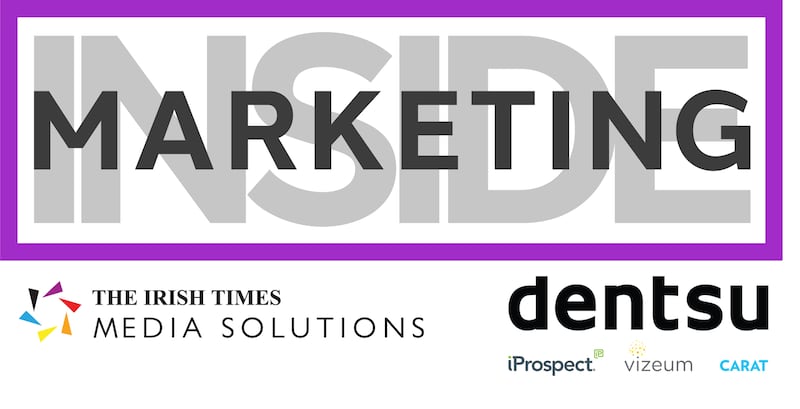How would you feel if in 20 years’ time a robot is promoted ahead of you, to your lifelong career ambition of CMO (Chief Marketing Executive)? You’ve structured your working life around hitting this milestone, given 30 years of loyal service to grow the business, have an impeccable track record, and have made plenty of personal sacrifices along the way.
However, and unfortunately for you, despite being recognised as the best candidate among your fellow carbon species, you’re just not as qualified as the silicone one the Business Intelligence Unit programmed last week.
But should you really feel hard done by? In the time it takes you to write a single email, C-3PO has: calculated the global business growth forecasts for the next 10 years; created and published a content strategy for 50 markets in 18 languages; rebranded the B2C product portfolio; completed CRO testing across all major business domains (plus tactically bought a few more in APAC); and optimised media campaigns, exceeding the daily sales target by 3.7 per cent before lunchtime. Feeling inadequate yet? You are “only human” after all.
You may think this is mere sci-fi jargon or the perpetuation of a future conspiracy theory. It’s not. Artificial Intelligence (AI) is here and it’s changing marketing practices. To be more precise, its changing everything.
From Task Automation and Silicone-based Champions (N-AI) to General Artificial Intelligence (G-AI).
Hilton Hotels are prototyping Connie, a robot concierge that gives guests quick access to personalised information
In today’s marketing departments, real-life examples of AI have already been implemented and are delivering exceptional results. These applications of AI are referred to as Narrow AI (N-AI). N-AI is where the technology (ie the programmed machine) has a clearly defined goal that it is tasked with completing as efficiently as possible.
For example, Aer Lingus are using N-AI to promote real-time trending travel destinations through online display media by showing users highly relevant localised imagery of city landmarks and cultural sites. Nordstrom, the high-end US retailer are using N-AI to empower their sales people to build better relationships with customers by allowing them to send highly customised images of clothing based on their specific tastes.
Meanwhile Hilton Hotels are prototyping Connie, a robot concierge that gives guests quick access to personalised information about the hotel and the local area. The possibilities for task automation are endless; N-AI is expected to save billions of euro in business admin efficiencies over the next decade.

It gets even more exciting when we explore General Artificial Intelligence (G-AI) also referred to as Strong Artificial Intelligence. G-AI is as powerful and as flexible as human intelligence, and, unlike N-AI, it is not confined to a specific problem or task. A small but not insignificant incremental advancement towards G-AI was achieved under the work of Demis Hassabis’s Deepmind team in 2016.
The AI programme that was given nothing more than the boundaries and rules of the board game “Go” (an ancient Chinese board game with 20 million current players worldwide, the aim of which is to surround more territory than one’s opponent). Within months, the programme had not only taught itself to play proficiently, but it also had defeated multiple Go (carbon-based) world champions. What was most striking was the AI technology had no formal recognised playing logic, its strategy was completely dynamic and unpredictable.
Although widespread use of G-AI by business is unlikely to occur over the next decade, the marketeers and businesses of tomorrow are those already embracing basic N-AI technologies throughout their core business and marketing objectives.
AI powers innovation
The old days of using customer segmentation to divide audiences into large comprehendible groups while making assumptions about the homogeneity within each segment are gone. That approach isn’t going to deliver business impact, nor does it connect with customers in any meaningful way. AI technologies have advanced far beyond these traditional frameworks and practices.
The chances are the technology solution that you're looking for already exists and can be tailored to your product or service
We are already witnessing many companies as they embrace this marketing innovation successfully by championing AI technologies and applications. Diageo for example has created a voice skill for Alexa called ‘The Bar’ that allows adults to become bar tenders within their own home.
The AI driven voice application provides inspiration and recipe ideas to budding mixologists who interact with the application by speaking with it. Within its first week of release in the UK, over 6,000 customers had ordered samples of Bailey’s Almande, Diageo’s new vegan spirit, demonstrating how the voice tool could be used for direct response campaigns.
Netflix uses machine learning (an application of AI that provides systems the ability to automatically learn and improve from experience without being explicitly programmed) to power their personalised content and movie recommendation engine. The Netflix AI application doesn’t just consider similar genres and movie themes based on previous watching habits as part of its recommendation engine, each piece of content is denoted with hundreds of individual tags that include sub-genres, themes, actors, directors, awards and locations.
Netflix are then able to identify viewing pattern correlations across these tags from 100M+ accounts to display the content their customers are most likely to enjoy watching. Today more than 80 per cent of the content consumed on Netflix is due to their content discovery engine, demonstrating the power of their AI solution.
A solution is likely to already exist
Don’t be perturbed or falsely believe AI technology solutions are beyond your marketing capabilities. AI should be an enabler that can help you to advance your marketing objectives and business goals. The best approach is to define as precisely as possible what your business challenge or goal is and then search for the AI technology solution. It may take time, effort and a little hard work, but the chances are the technology solution that you’re looking for already exists and can be tailored to your product or service.
Once you’ve implemented your transformational AI business solution for personalised ads and built a content recommendation engine or an automated customer service assistant, you can ask C-3PO for that well-earned promotion or raise. Just be very clear that you know precisely what you’re asking.
[ irishtimes.com/insidemarketingOpens in new window ]
[ available on SoundcloudOpens in new window ]











